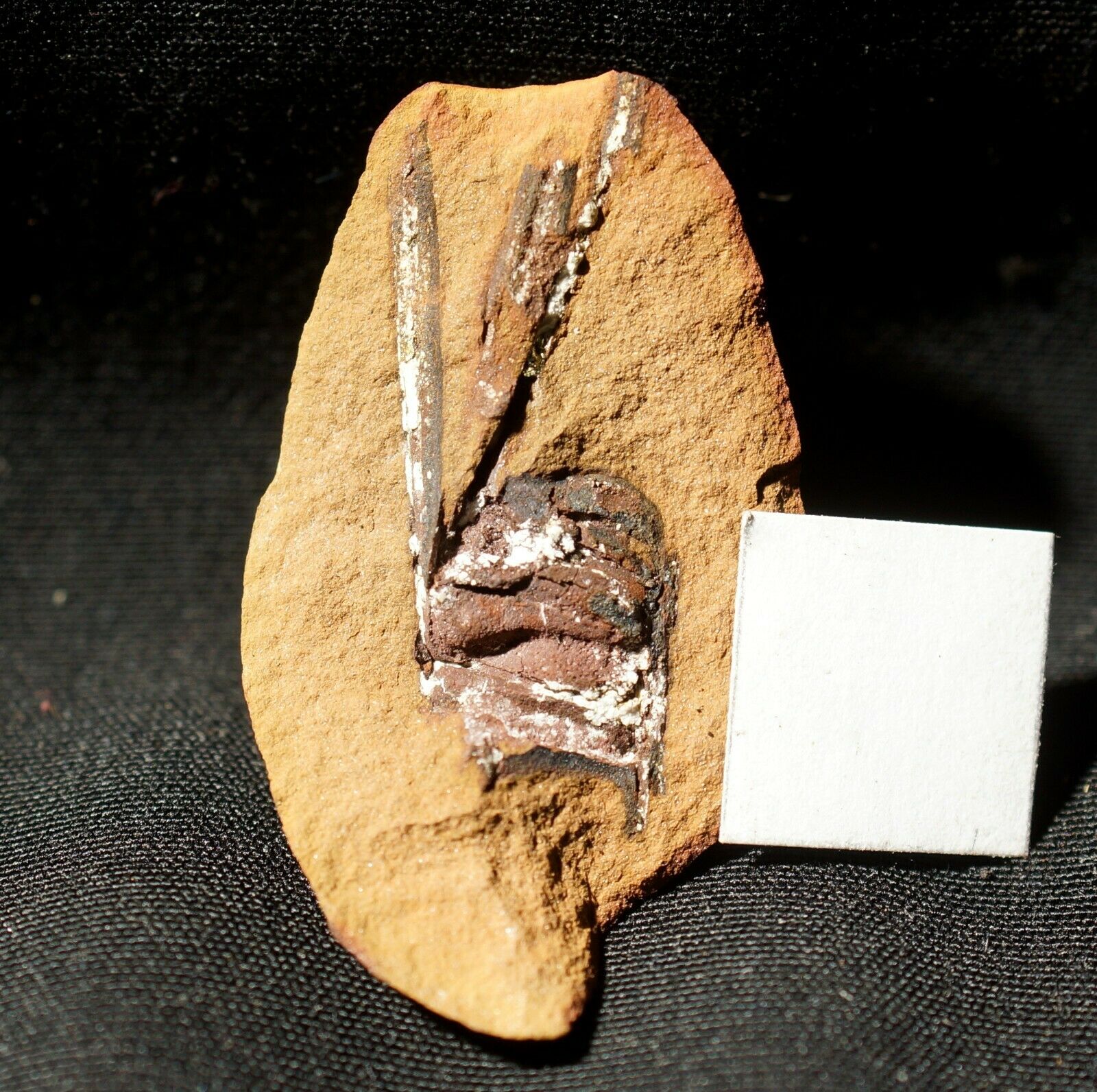-40%
Museum fossil Lepidodendron sail seed in paired siderite Mazon Creek like nodule
$ 12.67
- Description
- Size Guide
Description
Specimen:Beautiful, detailed lycopod seed
Lepidocarpon sp.
Scott
preserved in Mazon Creek like paired nodule from Europe !
Locality:
All detailed and accurate data will be provided with the specimen
Stratigraphy:
Upper Carboniferous, Middle Pennsylvanian, Bashkirian, Westphalian A
-
Bashkirian
,
Age:
ca. 314 Mya
Nodule dimensions:
ca 3,0 x 2,0 x 1,5 cm ( white square on pictures is 1,0 x 1,0 cm )
Lepidocarpon sp.
-
Rare , museum quality lycopod seed ( megaspre ) born on seed cones, that matured would rapidly blow around and crumble from tree - like resent pincones and fall into the swamp water. Seed sail - allowed wind and water to spread on large areas.
( Lycopod fructification) is a form genus of Carboniferous fossil lycopsid plants (order Lepidodendrales) known from strobili with heterosporous megasporangia containing a single mature seedlike megaspore and three abortive megaspores that is sometimes considered to be on the ancestral line of true seed plants.
Lepidodendron
is an extinct genus of primitive, vascular, arborescent (tree-like) plant related to the Lycopsids (club mosses). It was part of the coal forest flora. They sometimes reached heights of over 30 metres (100 ft), and the trunks were often over 1 m (3.3 ft) in diameter, and thrived during the Carboniferous period. Sometimes called "giant club mosses", this is actually not correct as they are actually closer to quillworts than to club mosses. The stretched closely packed diamond-shaped leaf scars left on the trunk and stems as the plant grew provide some of the most interesting and common fossils in Carboniferous shales and accompanying coal deposits. These fossils look much like tire tracks or alligator skin. The scars, or leaf cushions, were composed of green photosynthetic tissue, evidenced by the cuticle covering and being dotted with stomata, microscopic pores through which carbon dioxide from the air diffuses into plants. Likewise, the trunks of
Lepidodendron
would have been green, unlike modern trees which have scaly, non-photosynthetic brown or gray bark.
Lepidodendron
has been likened to a giant herb. The trunks produced very little, if any, wood. Most structural support came from a thick, bark-like region. This region remained around the trunk as a rigid layer that did not flake off like that of most modern trees. As the tree grew, the leaf cushions expanded to accommodate the increasing width of the trunk. The branches of this plant ended in cone-like structures.
Diaphrodendron
did not produce seeds like many modern plants. Instead, it reproduced by means of spores. It is estimated that these plants grew rapidly and lived 10–15 years. Some species were probably monocarpic, meaning they reproduced only once toward the end of their life cycle.
Lepidodendron
likely lived in the wettest parts of the coal swamps that existed during the Carboniferous period. They grew in dense stands, likely having as many as 1000 to 2000 giant clubmosses per hectare. This would have been possible because they did not branch until fully grown, and would have spent much of their lives as unbranched poles. In its juvenile stages, the trunk was supported by grass-like leaves that grew straight out of the trunk. By the Mesozoic era, the giant clubmosses had died out and were replaced by smaller clubmosses, probably due to competition from the emerging woody gymnosperms and other plants.
Lepidodendron
is one of the rarer plant fossils found in Pennsylvanian (Late Carboniferous) age rocks. They are closely related to other extinct genera,
Sigillaria
and
Lepidendropsis
.
Systematic:
Division:
Tracheophyta (Lycoposida)
Class:
Lycopodinae
Order:
Lepidodendrales
Family:
Lepidodendraceae
Genus:
Lepidocapron
Scott
Species:
Lepidocarpon sp.


















